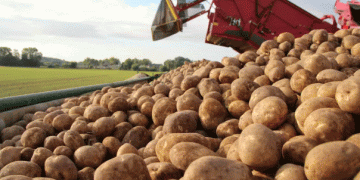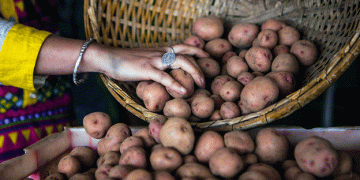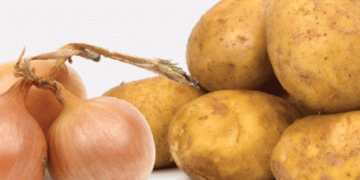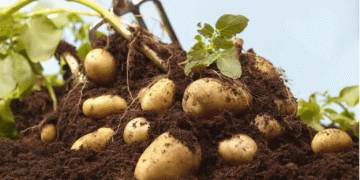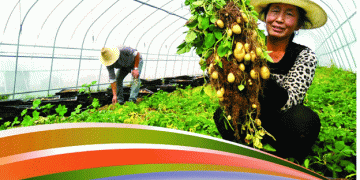In a twist of weather-related fate, Brazilian potato producers find themselves grappling with the aftermath of unusually high temperatures over the past two weeks. These climatic anomalies have sent ripples through the spud-producing regions, altering the landscape of potato farming operations.
The Triângulo Mineiro region, in particular, has borne the brunt of adverse weather conditions. Quality has taken a hit, with reports of the chocolate spot disease of potatoes surfacing, leading to significant darkening of the skin. Adding to the woe, the presence of moths has intensified, further complicating the situation. Faced with these challenges, producers have hastened their activities to minimize losses. Estimates suggest that over 90% of the areas designated for fresh market production in the Triangle have already been harvested, a figure surpassing expectations by 5 to 10%.
However, in the South of Minas, a different scenario unfolds. Harvests have progressed leisurely, with no notable reductions in potato quality. The region has completed about 85% of the harvest, and the supply calendar remains largely unaffected. Cristalina (GO) echoes a similar sentiment, maintaining a steady harvest pace despite the heat, owing to unfavorable market prices.
In Chapada Diamantina (BA), harvests proceed as planned. Producers report decent quality in potatoes despite the challenging heat, allowing operations to adhere to schedules. The region has not faced significant phytosanitary issues thus far.
Southwest São Paulo tells a tale of resilience. Growers are holding onto their harvest-ready potatoes, strategizing to negotiate better prices in the initial weeks of October. Potatoes that can withstand field conditions are being stored, demonstrating the farmers’ determination to overcome market challenges.
However, Vargem Grande do Sul (SP) paints a contrasting picture. Excessive heat and dry weather have compromised potato quality, causing rapid darkening of the skin. The region has witnessed losses, particularly concerning physiological problems like the chocolate spot disease. In response, producers are intensifying their efforts to salvage what they can. Despite their efforts, sales face hurdles due to the surplus volume of potatoes in the market. As a result, more than 95% of the harvest has been completed, and the area anticipates finishing the harvest by the first half of October, leaving only fields under contract with the industry for further harvesting.
These challenges underscore the delicate balance between nature’s unpredictability and agricultural resilience in the face of adversity. As the potato producers of Brazil navigate these trying times, their stories stand testament to the tenacity and determination that characterize the agricultural community in the country. Stay tuned for more updates on the evolving landscape of potato farming in Brazil.

